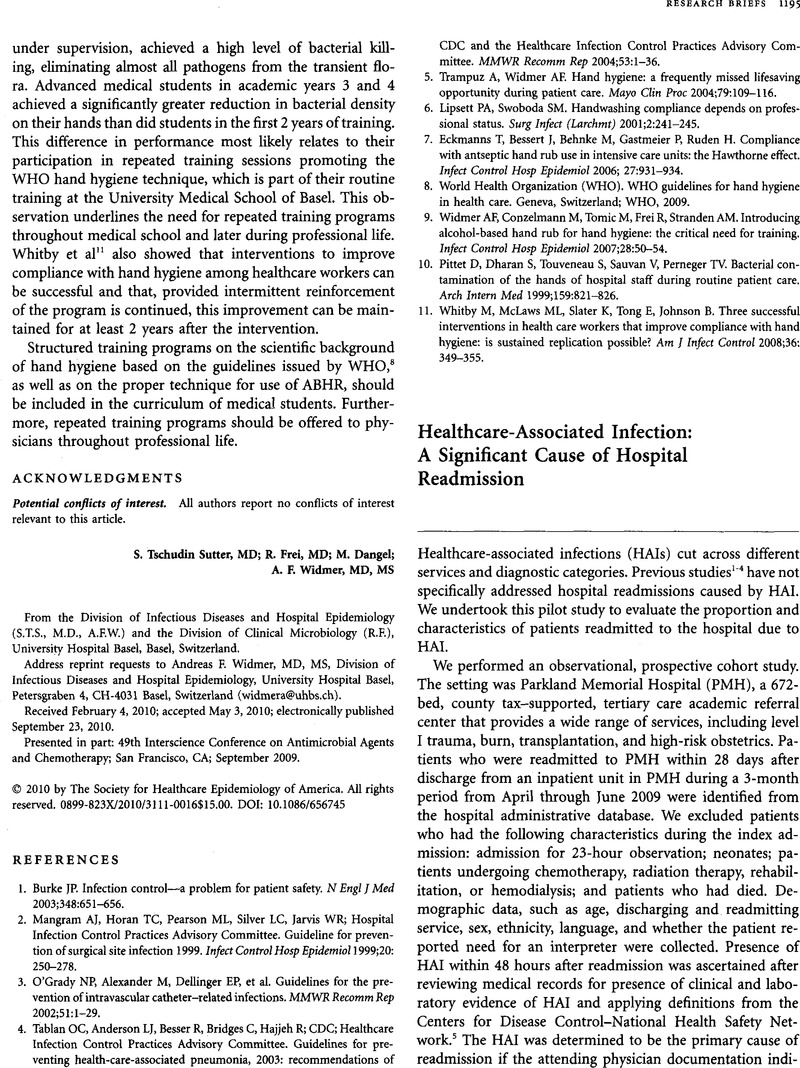Crossref Citations
This article has been cited by the following publications. This list is generated based on data provided by Crossref.
Khong, Carolyn J.
Baggs, James
Kleinbaum, David
Cochran, Ronda
and
Jernigan, John A.
2015.
The Likelihood of Hospital Readmission Among Patients With Hospital-Onset Central Line–Associated Bloodstream Infections.
Infection Control & Hospital Epidemiology,
Vol. 36,
Issue. 8,
p.
886.
Barrasa-Villar, J. Ignacio
Aibar-Remón, Carlos
Prieto-Andrés, Purificación
Mareca-Doñate, Rosa
and
Moliner-Lahoz, Javier
2017.
Impact on Morbidity, Mortality, and Length of Stay of Hospital-Acquired Infections by Resistant Microorganisms.
Clinical Infectious Diseases,
Vol. 65,
Issue. 4,
p.
644.
de Souza, Emília Carolina Oliveira
Ferreira Filho, Sebastião Pires
Gervatauskas, Kasys Meira
and
Fortaleza, Carlos Magno Castelo Branco
2018.
Post-discharge impact of healthcare-associated infections in a developing country: A cohort study.
Infection Control & Hospital Epidemiology,
Vol. 39,
Issue. 10,
p.
1274.
Napolitano, Francesco
Tomassoni, Davide
Cascone, Diana
Di Giuseppe, Gabriella
di Mauro, Maurizio
and
Rago, Vito
2018.
Evaluation of hospital readmissions for surgical site infections in Italy.
European Journal of Public Health,
Vol. 28,
Issue. 3,
p.
421.
Tadese, Bekana K.
Fujimoto, Kayo
DeSantis, Stacia M.
Mgbere, Osaro
and
Darkoh, Charles
2023.
Regional transmission patterns of carbapenemase-producing Enterobacterales: A healthcare network analysis.
Infection Control & Hospital Epidemiology,
Vol. 44,
Issue. 3,
p.
453.
Mahieu, Romain
Yannart, Melody
Dauby, Nicolas
Catry, Boudewijn
and
Newton, Sam
2024.
Prevalence of hospital-associated infections and its association with discharge destinations and hospital readmissions in Brussels, Belgium, from 2008 to 2020: A hospital-based, cross-sectional study.
Infection Control & Hospital Epidemiology,
Vol. 45,
Issue. 4,
p.
434.



